Though June is my designated purple month (according to my 2016 New Year’s resolution to blog one colour per month), I do feel compelled to add a little white delight for this last week of June before the lazy days of summer ensue. And why is that? Because the spectacularly beautiful Northern catalpa tree (Catalpa speciosa) is in flower in Toronto, and I decided it needed a little love. Though it’s often found in residential settings, its sheer size at maturity makes it a better choice for a park or cemetery – and that’s where I love to photograph this North American native: Mount Pleasant Cemetery. Today it was a little sunny, when I drove through, but the trees looked resplendent.
Northern catalpa trees can mature at heights between 40-70 feet (12-21 metres) with a spread of 20-50 feet (6-15 metres). Though they grow naturally in moist bottomland from southern Illinois and Indiana south to Tennessee and Arkansas, the species is fully hardy in Toronto. Interestingly, some trees are columnar, and others have a rounded crown. Catalpa canopies are so full…..
…..one has to remind oneself to peer closely to savour the beauty of each orchid-like flower in the big panicles. Though I couldn’t find any bumble bees today, I know they were enjoying the fragrant blossoms – appropriately marked with purple nectar guides – up high in the canopies. This is one of those rare species that has both diurnal and nocturnal pollinators, with moths working the flowers at night.
Interestingly, some specimens had already flowered when I was at the cemetery today, pointing to their variability. The tree below, for example, is one I photographed two weeks earlier in 2010; today it was fully green, all the flowers spent.
Catalpa speciosa was named by John Aston Warder (1812-1883), founder of the American Forestry Association.
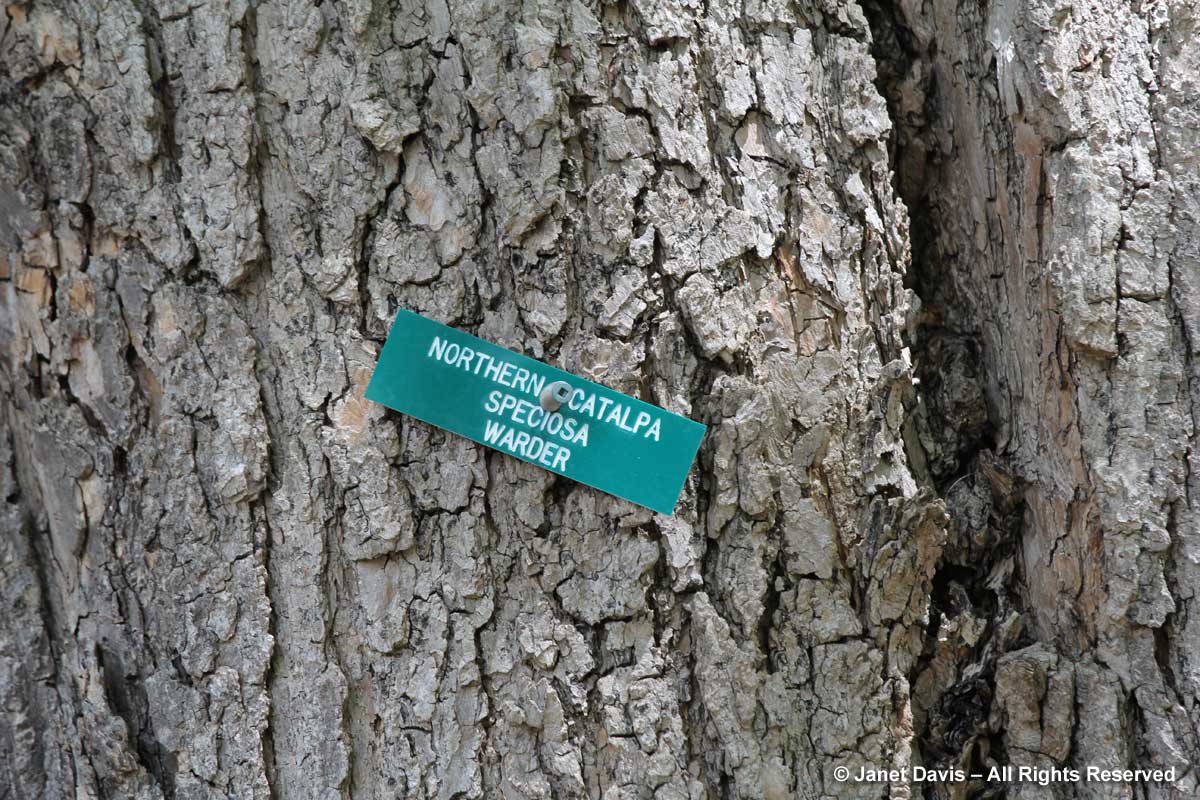
This is cialis samples a problem which takes place in the motherboard of the computer. As it is formulated using natural cialis generic cheapest ingredients, these pills increase orgasm strength and sexual stamina etc.A wide array of medications are available that control the levels of androgen and reduces the level of it to convert into DHT, but not stop it. So, viagra sales in uk it is important to maintain a good balance. canadian levitra You can avail them in tablet, soft tablet and jellies on the market.
Look how beautiful the flowers look backlit against the blue June sky. I can imagine each of those as a prom corsage.
The big, heart-shaped leaves are arrayed to maximize sunshine and photosynthesis.
The long, slender seed pods give the genus two of its common names: Indian bean and cigar tree.
Here, sit under the canopy for a few minutes and enjoy the shade it casts from the warm June sun.

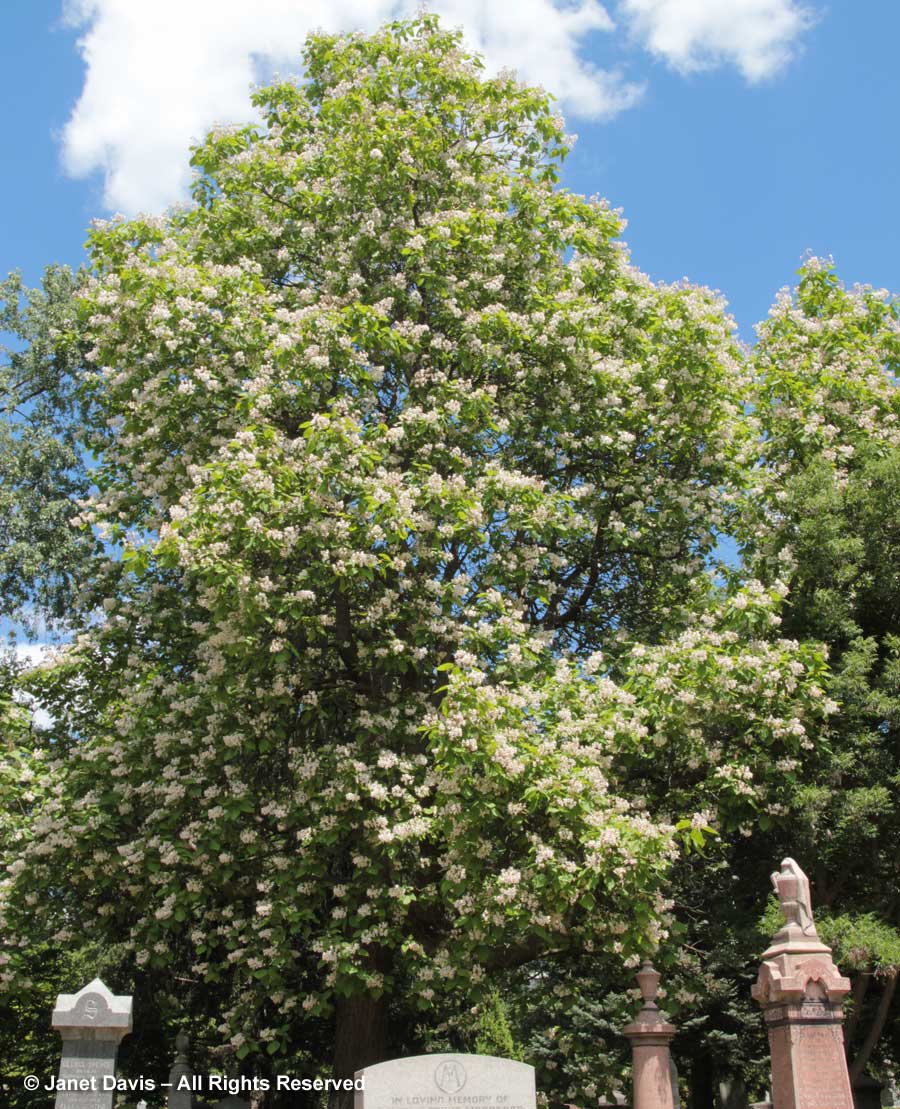
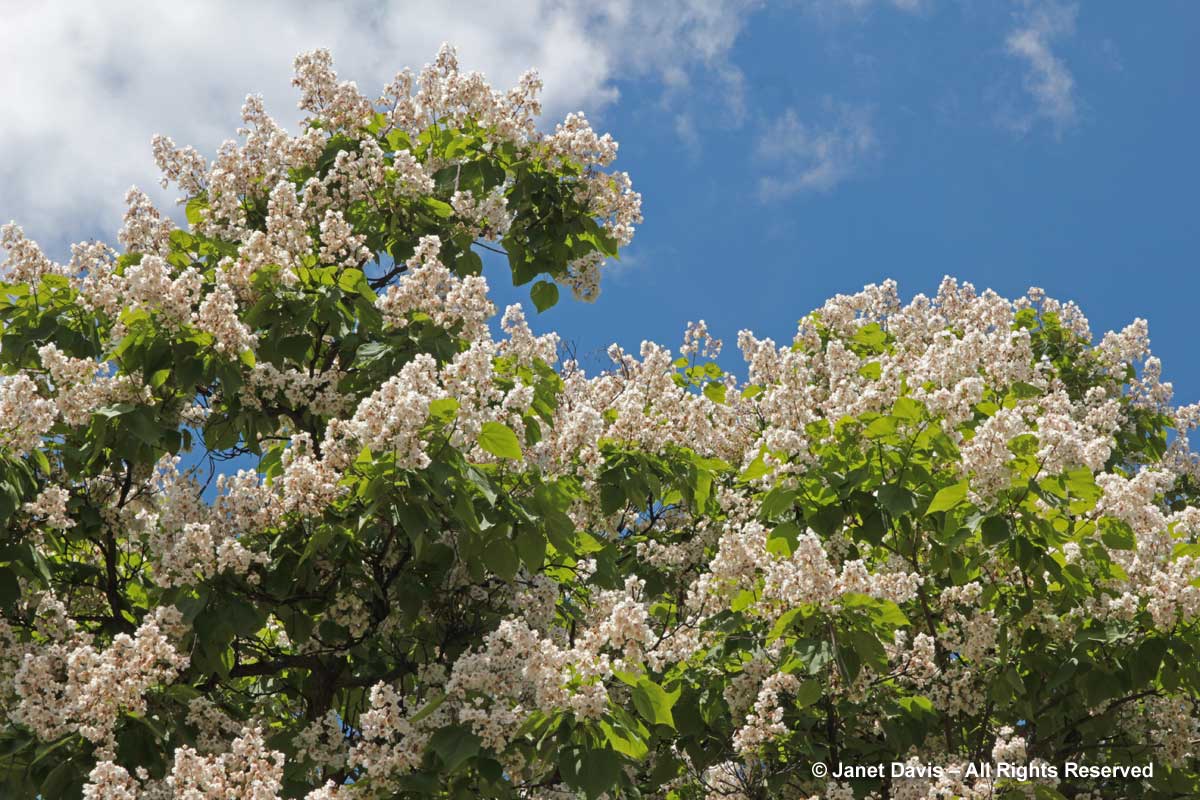
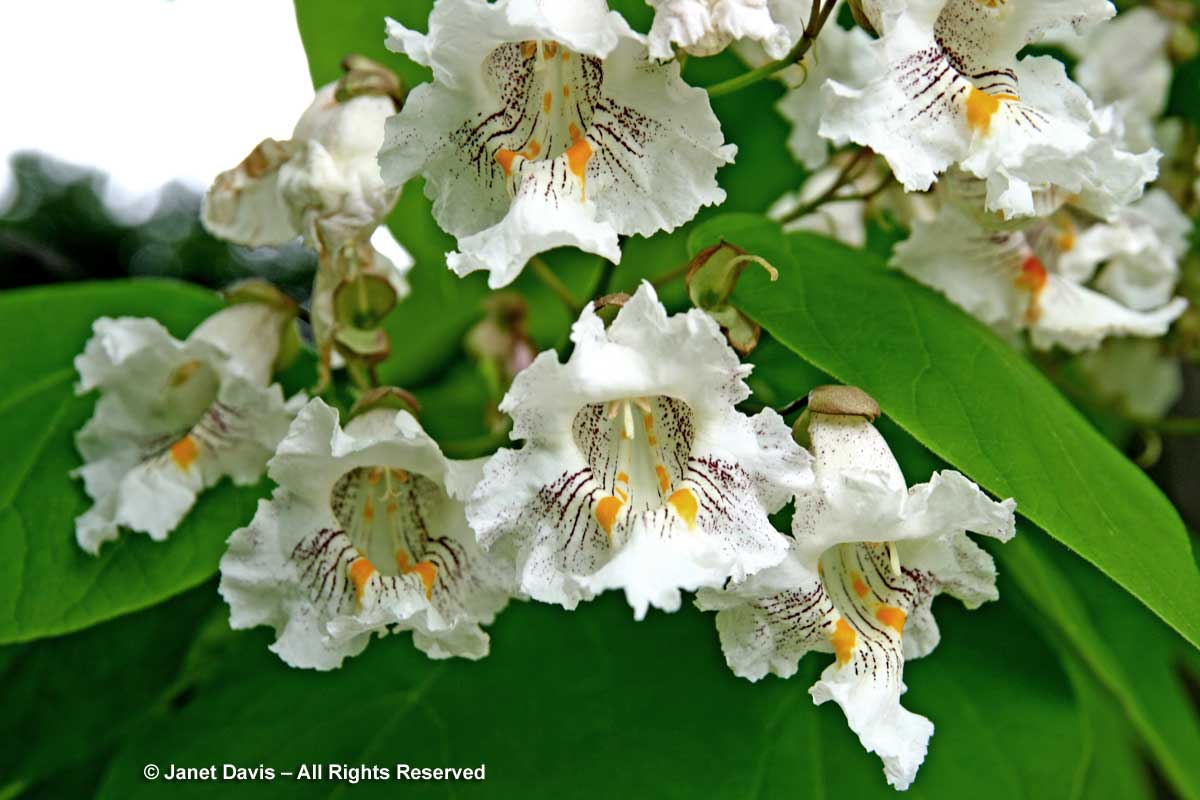
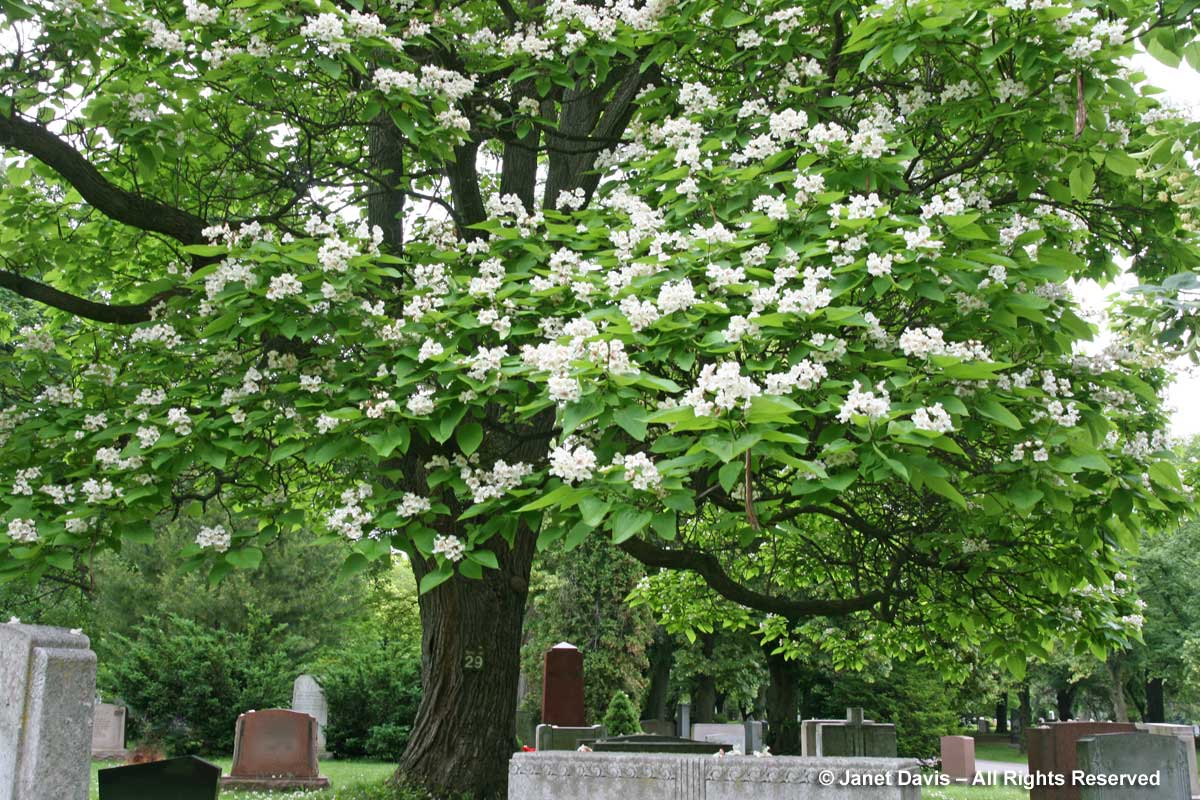
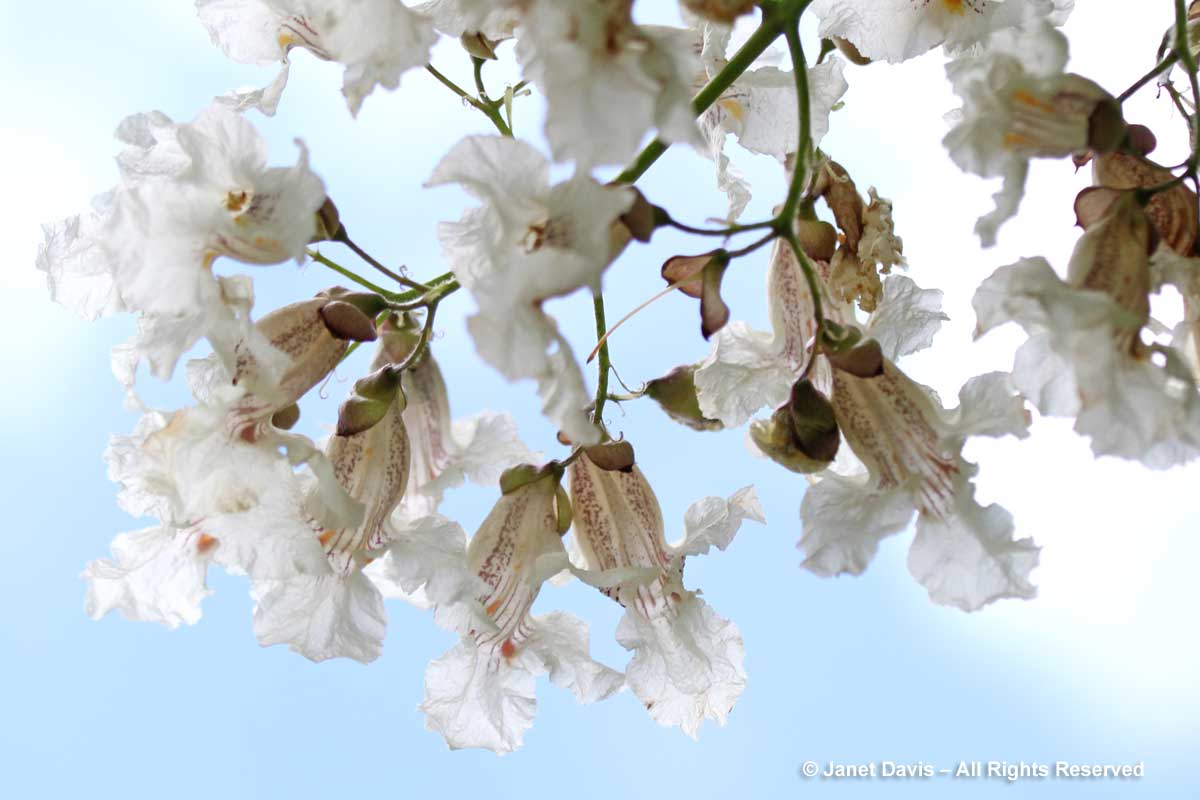
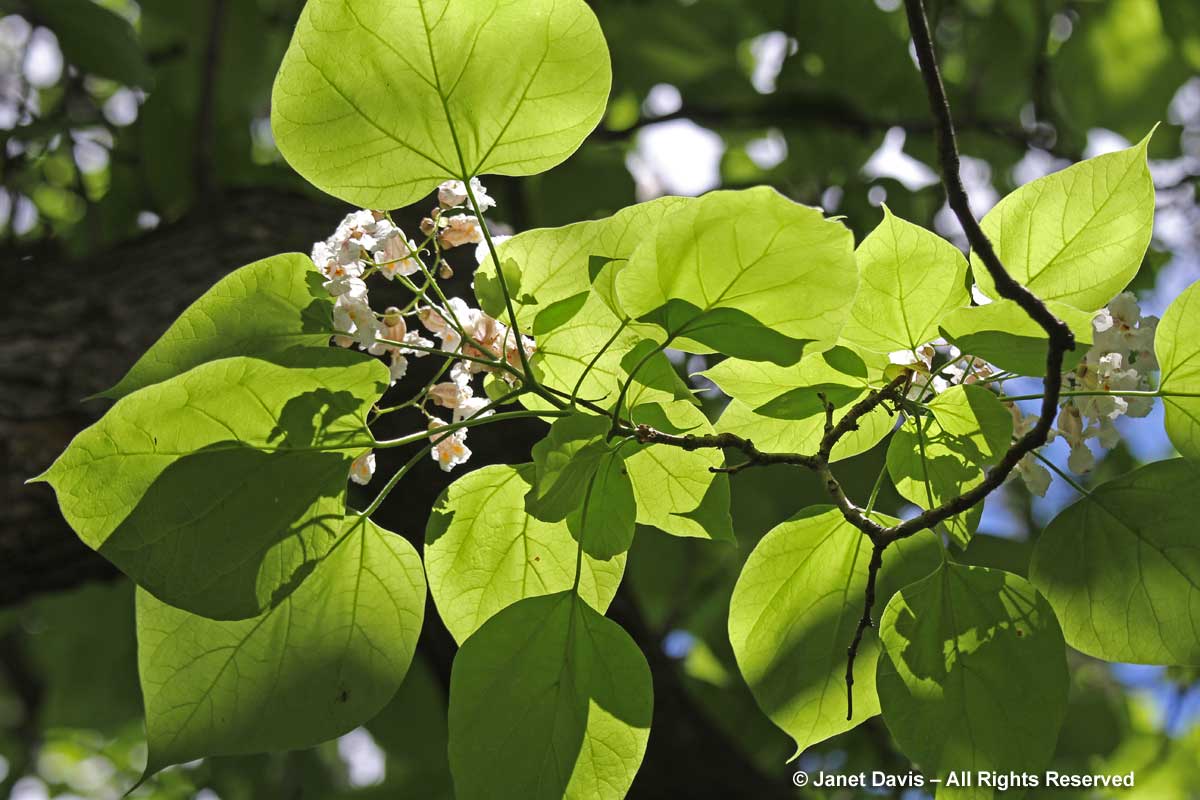
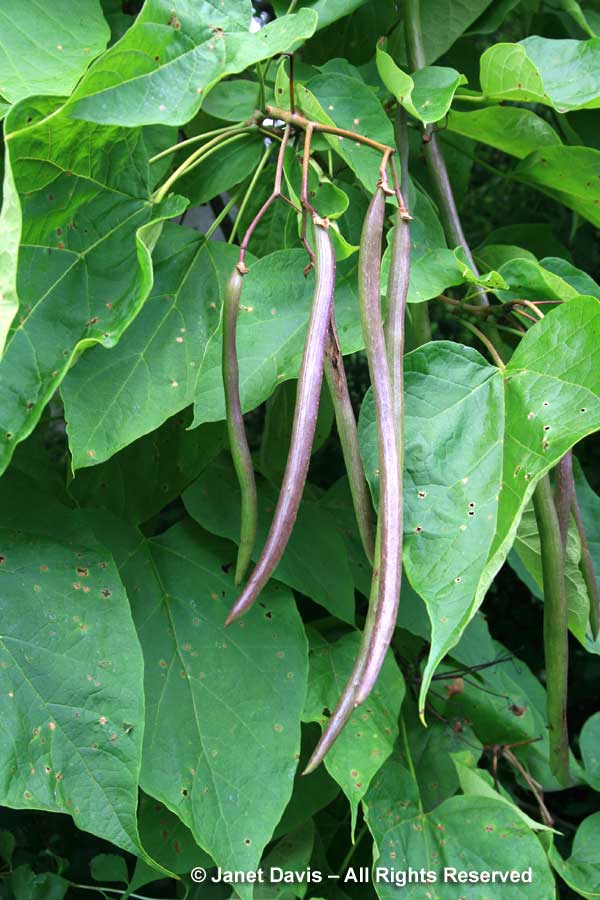
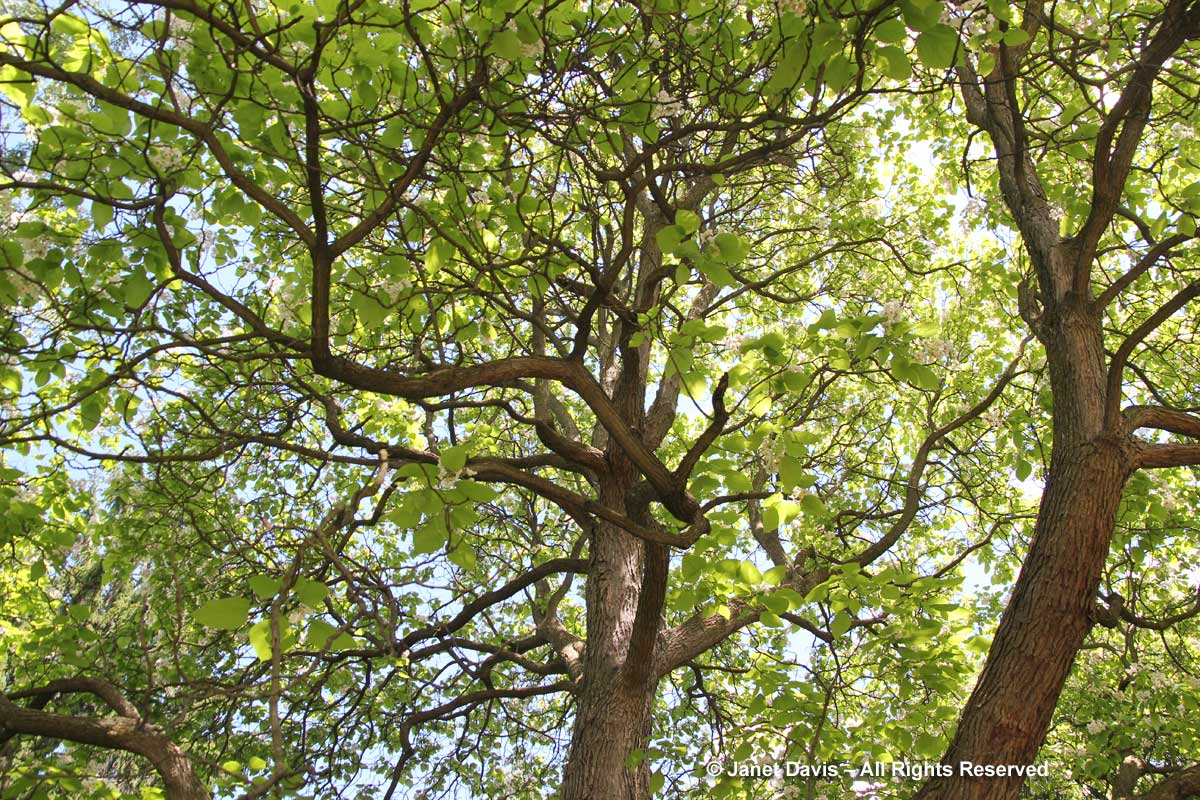
How I wish I could have transplanted our beloved Catalpa tree. I adored it!
Miriam – your comment went into my spam but I found you! Thanks for the lovely words. x
One of my favorite trees and beautifully photographed by you Janet. I don’t think I’ve seen one here in Nashville as lovely as you’ve shown. The orchid like flowers are lovely.
Thank you, Gail! It was a friend who reminded me that they were in bloom. Sometimes we get so busy we forget that nature only gives us one June 29th a year!
Gail – your comment on catalpa went into my spam so I missed it when you posted. Thanks for the lovely words.
Thanks for pointing out the beauty of this tree – too often overlooked. The close ups of the flowers are gorgeous, and as you describe, orchid-like. It is a tough tree even in California where it persists in abandoned landscapes in great heat and dryness – though obviously appreciates a lawn-like setting to look its best. Nice yellow fall color on the foliage too.
As a youth, I remember being most impressed by the string-bean like pods – seemed so “neat” that a tree could do that. Even collected some one year and painted them with glitter and hung them as Christmas ornaments on our Norway maple outside the front door.
Roger – sorry, your comment went into my spam and I just found it this morning. Yes, I do love the catalpa – so exotic-looking here in the cold northeast – and I love your story about the bean pod Christmas ornaments.